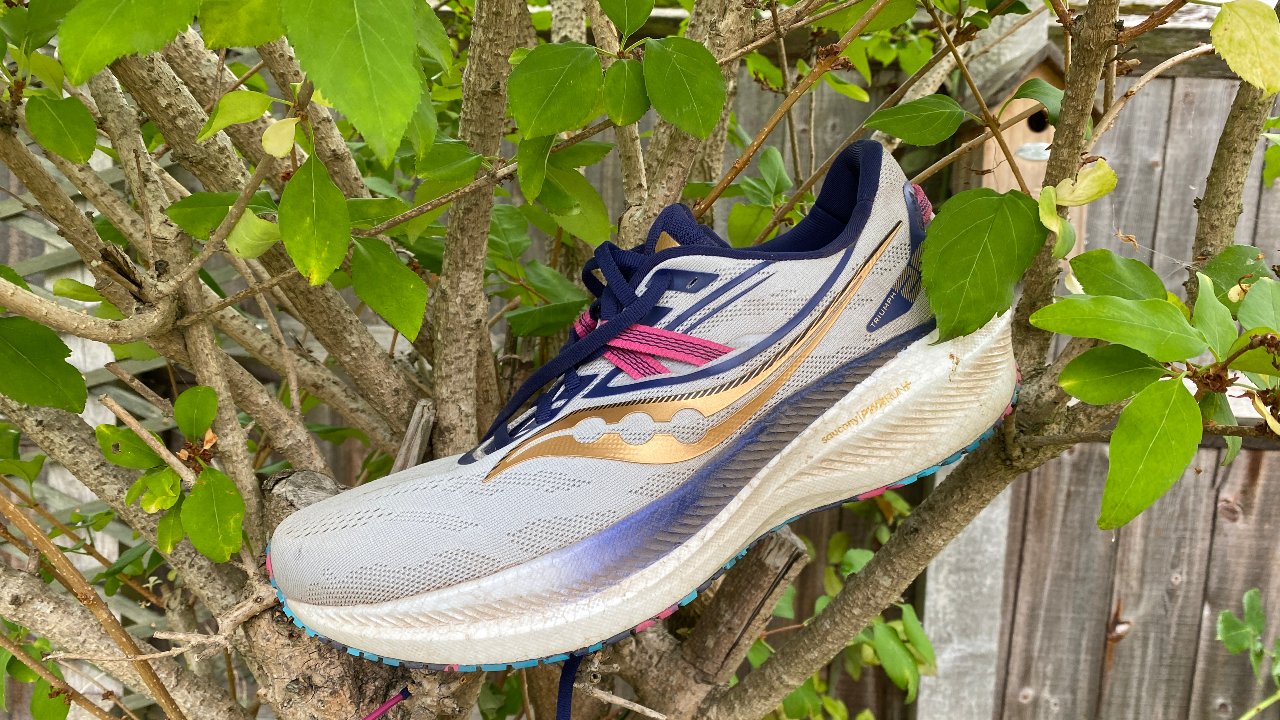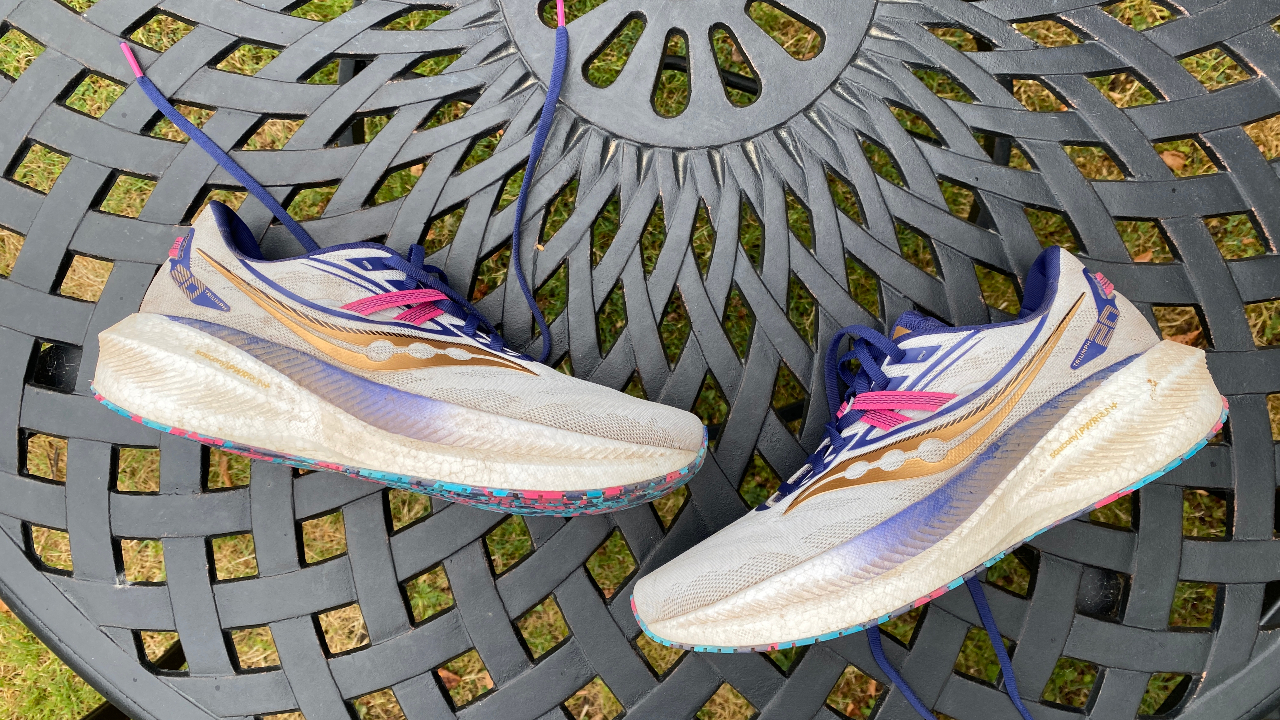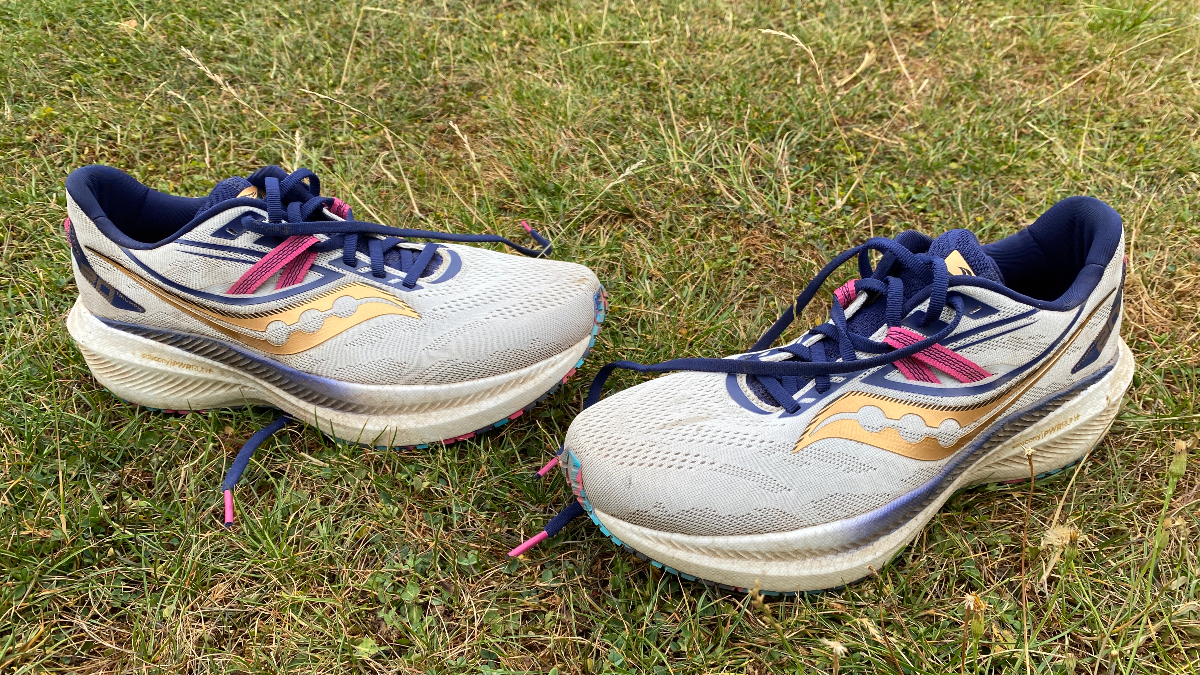Our Verdict
The Saucony Triumph 20 is lighter and softer than its predecessor, and offers a highly comfortable ride that’s more versatile than many other cushioned cruisers.
For
- Lighter than previous versions
- Softer midsole foam
- Good outsole
Against
- Better-value options available
- Didn’t feel effect of rocker
You can trust Coach
For beginners with a big budget the Saucony Triumph line has always been one of the top options on the market. It offers a cushioned, comfortable ride that has the required pop to make it versatile enough for enjoyable faster running too, and I have rated many versions of the Triumph as among the best running shoes available in the year they were released.
The Triumph lost its way with the past two versions, however, which I found too heavy and firm to enjoy running in regularly. The good news is the Triumph 20 is a return to form and it’s one of the best cushioned running shoes available.
Saucony Triumph 20: Price And Availability
The Saucony Triumph 20 is available in the UK now and will launch in the US imminently. Its US price will be $160 and it’s £155 in the UK. That’s a $10/£10 price jump on the Triumph 19, and although it’s about par for the course for a brand’s top cushioned shoe, there are better-value options available, such as the Puma Velocity Nitro 2 at $120/£100.
Design And Fit

The main changes to the Saucony Triumph 20 compared with the 19 are found in the midsole. It’s still made from the same PWRRUN+ foam, but the material has been tweaked to be lighter and softer, and the geometry of the shoe has been altered to create more of a rocker profile and a smoother transition from heel to toe.
Saucony has also changed the upper and lacing system, though it’s still a breathable mesh material. In truth, I didn’t find this change all that noticeable, but the upper has enough padding around the collar and tongue to feel plush without being overbearing or too hot.
The Triumph 20 also has a PWRRUN+ sock liner (insole) for added comfort, and a hard plastic heel counter hidden inside the upper to provide extra stability. The shoe has a 37mm heel stack height and a 27mm forefoot stack height for a drop of 10mm, and it weighs 10.3oz/292g in my UK 9, a substantial drop from the 11.4oz/324g the Triumph 19 weighed.
Part of that drop in weight is down to a reduction in rubber on the outsole, but there is still good coverage in the key impact areas around the heel and forefoot, and it has gripped well for me on roads and light trails during my testing.
How I Tested This Shoe
I have run 67km in the Saucony Triumph 20, mostly using it for easy and long runs during my marathon training. I have a long history with the Triumph line and have used each of the seven versions that preceded the 20 (the numbering system is confusing, having gone Triumph ISO 2, 3, 4, 5 and then 17, 18, 19, 20 in recent years).
Running Performance

It was clear from my first run in the Triumph 20 that I was going to enjoy it more than the Triumph 18 or 19. The softer midsole is noticeable from the off, while the lighter weight is more appreciated the longer your run goes on.
I have long hailed the Triumph as a cushioned shoe that wasn’t just for easy running. It always had enough spring in the midsole to make it a solid option for longer races and tempo runs, especially if you are fairly new to running and aren’t keen to spend big on a shoe rotation including a dedicated racer.
The past two versions, however, lost some of that versatility, being heavier and less lively than earlier editions. The Triumph 20 brings the versatility back. It’s still primarily a comfortable shoe for your base training, but the reduced weight and improved midsole make it more enjoyable when easing through the gears on a long progression run or tackling a weekly tempo run.
I also found that the Triumph 19’s firmer feel meant that on longer runs I started to get discomfort under my forefoot. This is not the case with the Triumph 20, which has felt comfortable on all my runs, with the longest being around 22km.

The PWRRUN+ midsole is still not the most impressive you’ll find on a cushioned shoe in my experience, though. It’s not as soft and squishy as the ZoomX midsole on the Nike Invincible 2, as responsive as the DNA Loft V3 foam used in the Brooks Glycerin 20, or as bouncy as the Nitro foam in the Puma Velocity Nitro 2. The Triumph 20 delivers a comfortable and enjoyable ride, and the foam protects the legs well, but it’s a shoe with a more traditional feel than the others I’ve mentioned. I also didn’t notice any benefits of the updated rocker design.
Is The Saucony Triumph 20 Worth It?
The Saucony Triumph 20 is a great update on the Triumph 19, and it’s among the best cushioned shoes available. It’s expensive, though, and if shopping in this high-end category I prefer the feel of the Brooks Glycerin 20 and Nike Invincible 2.
It may come down to personal preference when picking between these three, which I would rate as the stand-out cushioned shoes available. The Invincible 2 is softer and less stable than the Triumph, and the Glycerin 20 is firmer and more responsive. The Triumph 20 offers a good balance of softness and stability that will work for a variety of runners, and it is a shoe I would highly recommend to new runners who aren’t put off by its high price.
Those looking for better value will find it in the Puma Velocity Nitro 2 or the Nike Pegasus 39. Though neither of those shoes are as cushioned as the Triumph 20, they are still comfortable and offer more versatility as daily trainers that can handle speed sessions well.

Nick Harris-Fry is a journalist who has been covering health and fitness since 2015. Nick is an avid runner, covering 70-110km a week, which gives him ample opportunity to test a wide range of running shoes and running gear. He is also the chief tester for fitness trackers and running watches, treadmills and exercise bikes, and workout headphones.

